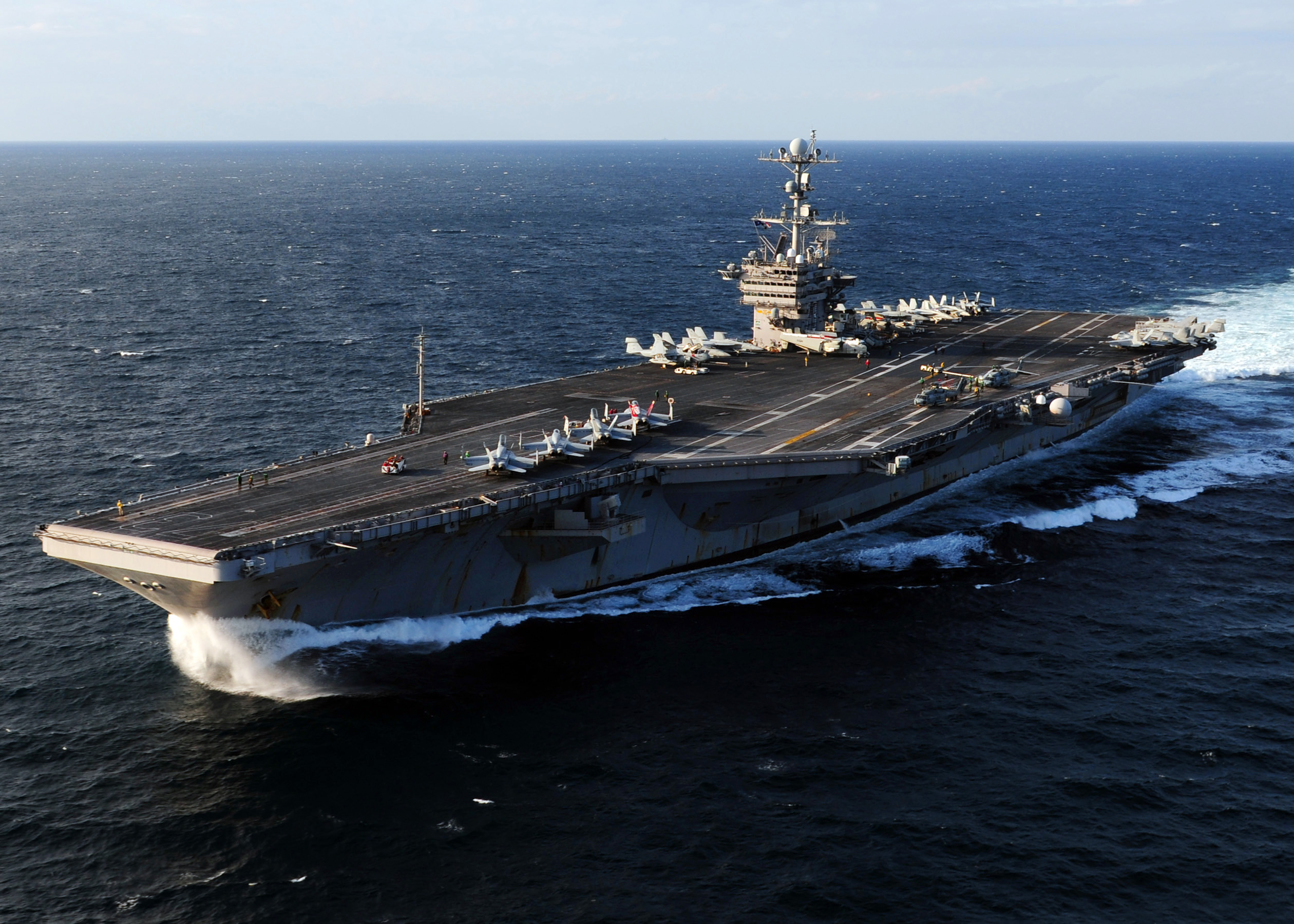The US Navy intends to replace the USS Ronald Reagan, currently stationed in Japan and serving as the service’s only forward-deployed aircraft carrier, with the USS George Washington by 2025.
Advertisement
According to reports, USS George Washington, which the USS Reagan replaced in 2015, is expected to be redeployed to Yokosuka with upgraded unmanned refueling capabilities to equip the US forces to repel a possible Chinese invasion of Taiwan.
Lt. Brian Cunningham, a spokesman for the US Pacific Fleet, who spoke to Nikkei Asia, said that plans are being made to replace the forward-deployed carrier. He continued that the details of the movement cannot be disclosed until proper coordination has been secured.
The USS George Washington aircraft carrier was deployed at Yokosuka for seven years before the USS Ronald Reagan took its position in 2015. The carrier has been in Virginia for over five and a half years for a midlife repair and refueling procedure.
The vessel is being modified as a part of the process to deploy the Boeing MQ-25A Stingray. The Stingray is the world’s first operational carrier-based unmanned aircraft.
It offers aerial refueling and intelligence, surveillance, and reconnaissance (ISR) capabilities that improve the capacity and adaptability of the Carrier Air Wing (CVW) and Carrier Strike Group (CSG).
The capability of aerial refueling will significantly increase the range of the carrier air wing.
This will be crucial in combating China’s anti-access/area denial strategy, which is a key component of its strategy against the US in the event of a future invasion of Taiwan. It involves using various missiles to block US Navy from entering waters near China’s coastlines.
Chinese medium-range ballistic missiles, like the DF-21, sometimes known as the “carrier killer,” can destroy an aircraft carrier if they are within striking distance.
In such a combat scenario, the carriers must operate from a considerable distance. The MQ-25A will allow George Washington to dispatch its carrier wing to hostile regions from a greater distance.
Advertisement
ALSO READ: Doubling The ‘Size Of Nukes’, How Both US & Russia Can Wreak Havoc In The Absence Of New START
:quality(70)/cloudfront-us-east-1.images.arcpublishing.com/archetype/77W74OSMXFGCFKRJHTJLD467WQ.jpg)
The latest development comes days after the USS Barry, a guided-missile destroyer, left Yokosuka, Japan, and the USS Shoup, a destroyer, took over its responsibilities.
Furthermore, the US Air Force also decided to withdraw its entire fleet of F-15C/D fighter jets from Japan late last year. On November 4, it dispatched a small number of F-22 Raptors to Okinawa to begin a six-month rotation.
Why Is The USS Ronald Reagan Being Replaced?
The US defense budget for the fiscal year 2019 included a provision limiting the time frame that navy warships might be deployed overseas. This regulation was implemented in response to two collisions involving destroyers based in Yokosuka in 2017.
The Fitzgerald collided with a cargo ship sailing under the Philippine flag south of Tokyo in June, marking the first of 2017’s mishaps that hastened the decision to rotate forward-deployed boats. Seven Fitzgerald sailors were killed in the accident, while three others were injured.
A month later, 10 US sailors were killed, and 48 were hurt when John S. McCain collided with a tanker bearing the Liberian flag off the coast of Singapore and Malaysia.
The two mishaps cost the American ships $300 million and $100 million in damages, respectively.
The USS Fitzgerald and the USS John S. McCain had been stationed in Yokosuka for over a decade. Thus, Congress concluded that more frequent rotation was required to keep naval vessels in good shape.
Advertisement
READ MORE

Congress mandated in the 2019 defense budget that Aircraft carriers, amphibious ships, cruisers, destroyers, frigates, and littoral combat ships should not be deployed in the forward position for more than ten years.
Under this regulation, the United States Navy intends to replace Ronald Reagan before the 10-year mark. The mainstay of America’s naval power, aircraft carriers have crews of over 5,000 and can accommodate up to 90 aircraft.
The USS George Washington’s compartments and structure were authorized to be modified by the US Navy as part of the fiscal 2019 military budget.
The decision was taken with the expectation that the ship would return to Yokosuka after being overhauled to assist in deploying the MQ-25. The US Navy intends to deploy MQ-25s with all Nimitz and Ford-class carriers.
Advertisement